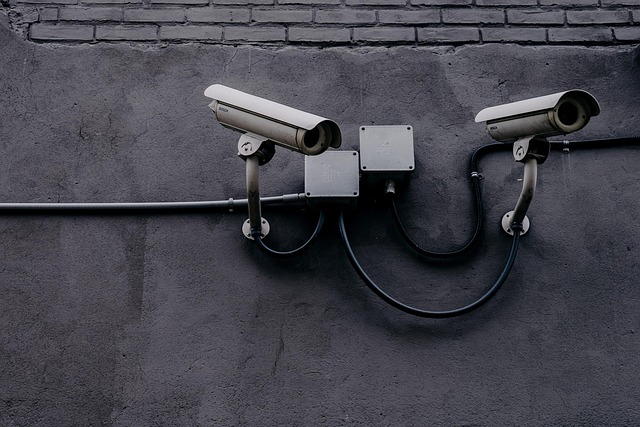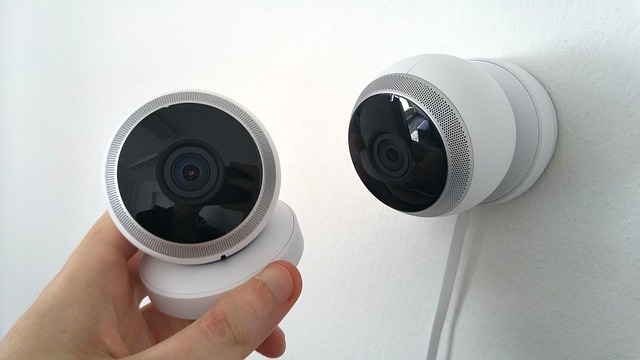Home security footage offers significant benefits, from deterring burglars to providing real-time alerts and evidence. Advanced IP cameras, with features like motion detection and high-definition video, have transformed home security over traditional analog systems. When choosing a system, consider resolution, night vision, storage options, and integration with smart devices. Strategically place cameras indoors and outdoors for optimal coverage, regularly test them, and maintain the system for peak performance while addressing privacy concerns through secure data management practices.
“Enhance your home’s security with the power of camera systems! This comprehensive guide navigates the world of home surveillance, offering professional insights on capturing crucial home security footage. From analog to digital (IP) cameras, we explore the benefits and applications of each. Learn about essential features, optimal placement strategies, and maintenance tips for a secure system. Discover how to protect your space while respecting privacy concerns. Get ready to transform your home with intelligent monitoring.”
- Understanding Home Security Footage: Benefits and Applications
- Types of Camera Systems: Analog vs Digital (IP) Cameras
- Essential Features to Consider for Your Home Security System
- Installation and Placement Strategies for Optimal Coverage
- Maintenance and Privacy Concerns: Ensuring Secure Home Monitoring
Understanding Home Security Footage: Benefits and Applications

Home security footage is a powerful tool that offers numerous benefits and applications for enhancing your home’s safety and protection. By installing a camera system, you gain valuable eyes on your property, enabling you to monitor activities both indoors and outdoors. This real-time visibility allows for immediate response to potential threats, giving peace of mind and assurance.
The advantages are vast, from deterring burglars and intruders to providing evidence in the event of an incident. Home security footage can be used to identify suspicious behavior, verify deliveries, or even track pets’ movements. With advanced technology, these systems offer motion detection, night vision, and remote access through smartphones, ensuring you stay connected to your home’s security wherever you are.
Types of Camera Systems: Analog vs Digital (IP) Cameras

In the realm of home security, camera systems play a pivotal role in providing homeowners with peace of mind and crucial evidence for potential incidents. When considering options, understanding the distinction between analog and digital (IP) cameras is essential. Analog systems, while traditional, transmit video signals over coaxial cables, offering a straightforward setup but limiting flexibility. On the other hand, Digital IP cameras have revolutionized home security by transmitting video data over an Ethernet network, enabling high-definition footage and advanced features like remote access and cloud storage.
IP cameras provide enhanced capabilities, such as night vision, motion detection, and customizable alerts, making them a popular choice for comprehensive home security monitoring. This modern approach allows homeowners to review real-time security footage from their smartphones or computers, ensuring prompt response to any incidents. The shift towards digital technology has transformed the way people safeguard their homes, offering improved clarity, accessibility, and control over home security data.
Essential Features to Consider for Your Home Security System

When selecting a home camera system, consider features that go beyond basic video recording. Home security footage is crucial, but advanced options like motion detection and real-time alerts can provide added peace of mind. Look for cameras with high-resolution sensors (1080p or higher) for clear, detailed images, and night vision capabilities to ensure round-the-clock monitoring.
Storage options are another vital consideration. Cloud storage plans offer convenience and remote access, while local storage ensures footage is saved even without an internet connection. Some systems also provide features like two-way audio, allowing you to communicate with visitors through the camera, and integration with smart home devices for seamless control and automation.
Installation and Placement Strategies for Optimal Coverage

When it comes to installation and placement strategies for a home camera system, the goal is to achieve optimal coverage while integrating seamlessly into your living space. Start by assessing the layout of your home and identifying high-risk areas—entry points like doors and windows, as well as common gathering spots. Place cameras strategically to capture these areas clearly, ensuring they offer both wide-angle and close-up views.
Consider using a mix of indoor and outdoor cameras for comprehensive coverage. For interior spaces, mount cameras at eye level or slightly above to avoid blind spots. In exterior areas, place them where they can see clear lines of sight without obstructions like trees or furniture. Regularly test the camera’s field of view and adjust as needed to capture high-quality home security footage day or night.
Maintenance and Privacy Concerns: Ensuring Secure Home Monitoring

Home camera systems, while offering enhanced security and peace of mind, come with maintenance and privacy concerns that must be addressed. Regular upkeep is crucial to ensure optimal performance and reliable home monitoring. This includes keeping cameras clean, testing connectivity, and updating firmware to patch any security vulnerabilities. Additionally, proper storage and encryption of recorded footage are essential to safeguard sensitive data and maintain privacy.
When it comes to privacy, choosing a system that offers robust data protection features is vital. Look for cameras with secure cloud storage options, end-to-end encryption, and the ability to control access permissions. Regularly reviewing and managing recording schedules and user access ensures only authorized individuals can view the home security footage. Striking a balance between convenience and privacy will help create a safe and secure environment without compromising personal freedoms.
Home security footage is a powerful tool for safeguarding your property, offering peace of mind and potential crime prevention. By understanding the benefits, choosing the right camera system (analog vs digital IP cameras), and implementing strategic installation and maintenance practices, you can create an effective home security network. Remember to prioritize privacy concerns and always ensure your system is secure to protect your family and assets.
